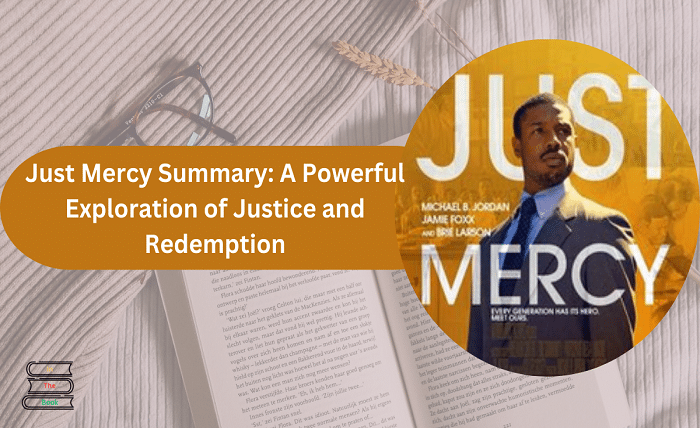Just Mercy Sparknotes: A Deep Dive into a Powerful Memoir

Introduction
Bryan Stevenson’s “Just Mercy” is a profound exploration of the American criminal justice system, focusing on the plight of those on death row. This memoir, filled with raw emotion and unflinching honesty, offers a stark contrast to the often-sanitized narratives surrounding incarceration. Through vivid storytelling, Stevenson exposes the systemic injustices that disproportionately affect marginalized communities. This Sparknotes guide will delve into the core of “Just Mercy,” providing a comprehensive overview of its key elements.
The Author’s Journey
At the heart of “Just Mercy” lies the personal journey of Bryan Stevenson, a dedicated lawyer who founded the Equal Justice Initiative (EJI). Stevenson’s unwavering commitment to defending the innocent and the condemned is the driving force behind the narrative. The book chronicles his early experiences as a law student and his subsequent decision to dedicate his life to fighting for justice. Throughout the memoir, Stevenson’s passion for his work is palpable, inspiring readers to consider their own role in creating a more equitable society.
Walter McMillian: A Symbol of Injustice
One of the most compelling characters in “Just Mercy” is Walter McMillian, a Black man wrongfully convicted of murder and sentenced to death. Stevenson’s relentless pursuit of justice for McMillian becomes a central theme of the book. Through vivid storytelling, Stevenson exposes the racial bias and prosecutorial misconduct that led to McMillian’s conviction. This case serves as a powerful indictment of the American justice system and highlights the urgent need for reform.
The Culture of Poverty and Crime
“Just Mercy” delves deep into the complex relationship between poverty, crime, and incarceration. Stevenson argues that many individuals who end up on death row come from marginalized communities plagued by systemic inequalities. The book explores the factors that contribute to crime, such as lack of education, economic opportunity, and exposure to violence. By examining these root causes, Stevenson challenges readers to rethink their perspectives on criminal justice.
The Death Penalty: A Moral Quandary
A central focus of “Just Mercy” is the morality of the death penalty. Stevenson presents compelling arguments against capital punishment, highlighting the risk of executing innocent people and the disproportionate impact on people of color. The book raises profound questions about the nature of justice and the value of human life. Through vivid accounts of death row inmates, Stevenson humanizes those often portrayed as monsters, inviting readers to consider the complexities of the issue.
The Role of Race and Inequality
Race plays a significant role in “Just Mercy,” as Stevenson exposes the systemic racism that permeates the criminal justice system. The book highlights the disproportionate number of Black people on death row and the ways in which racial bias impacts every stage of the legal process. By shining a light on these injustices, Stevenson calls for a reckoning with the nation’s history of racial oppression.
The Power of Empathy and Compassion
Throughout “Just Mercy,” Stevenson emphasizes the importance of empathy and compassion in understanding the complexities of the criminal justice system. By humanizing those often dehumanized, Stevenson invites readers to see the humanity in individuals who have made mistakes. The book suggests that true justice involves not only punishment but also rehabilitation and redemption.
The Impact of Incarceration on Families and Communities
“Just Mercy” explores the devastating impact of incarceration on families and communities. Stevenson highlights the challenges faced by children who have parents in prison and the economic consequences of mass incarceration. The book emphasizes the need for policies that support reentry and promote rehabilitation, rather than simply punishment.
The Fight for Justice: A Collective Responsibility
Stevenson’s work at the Equal Justice Initiative is a testament to the power of collective action. “Just Mercy” inspires readers to become involved in the fight for justice and to challenge systemic inequalities. The book encourages readers to use their voices to advocate for criminal justice reform and to support organizations working to create a more equitable society.
Conclusion
“Just Mercy” is a powerful and thought-provoking memoir that exposes the deep flaws in the American criminal justice system. Bryan Stevenson’s unwavering commitment to justice is an inspiration, and his book serves as a call to action for readers. By understanding the stories of those on death row, we can begin to build a more compassionate and equitable society. It is essential to remember that true justice requires more than just punishment; it demands empathy, compassion, and a relentless pursuit of fairness.
FAQs
-
What is the main theme of “Just Mercy”? The main theme of “Just Mercy” is the systemic injustice within the American criminal justice system, particularly as it relates to the death penalty and mass incarceration.
-
Who is Walter McMillian? Walter McMillian is a central character in “Just Mercy.” He was wrongfully convicted of murder and sentenced to death, but Bryan Stevenson worked tirelessly to overturn his conviction.
-
What is the Equal Justice Initiative (EJI)? The Equal Justice Initiative (EJI) is a legal organization founded by Bryan Stevenson. It is dedicated to defending and representing indigent and incarcerated individuals with a focus on death penalty cases.
-
How does “Just Mercy” address the issue of race? “Just Mercy” highlights the disproportionate impact of race on the criminal justice system, exposing the systemic racism that leads to wrongful convictions and excessive sentencing for people of color.
-
What can readers do to support criminal justice reform? Readers can support criminal justice reform by staying informed, voting for elected officials who prioritize justice, donating to organizations working for change, and advocating for policies that promote equity and compassion.





